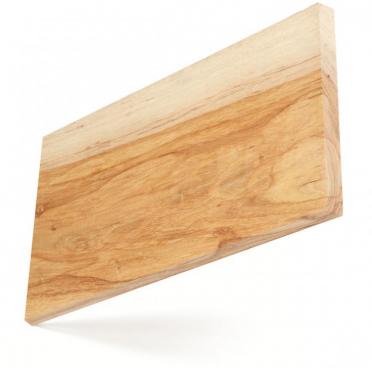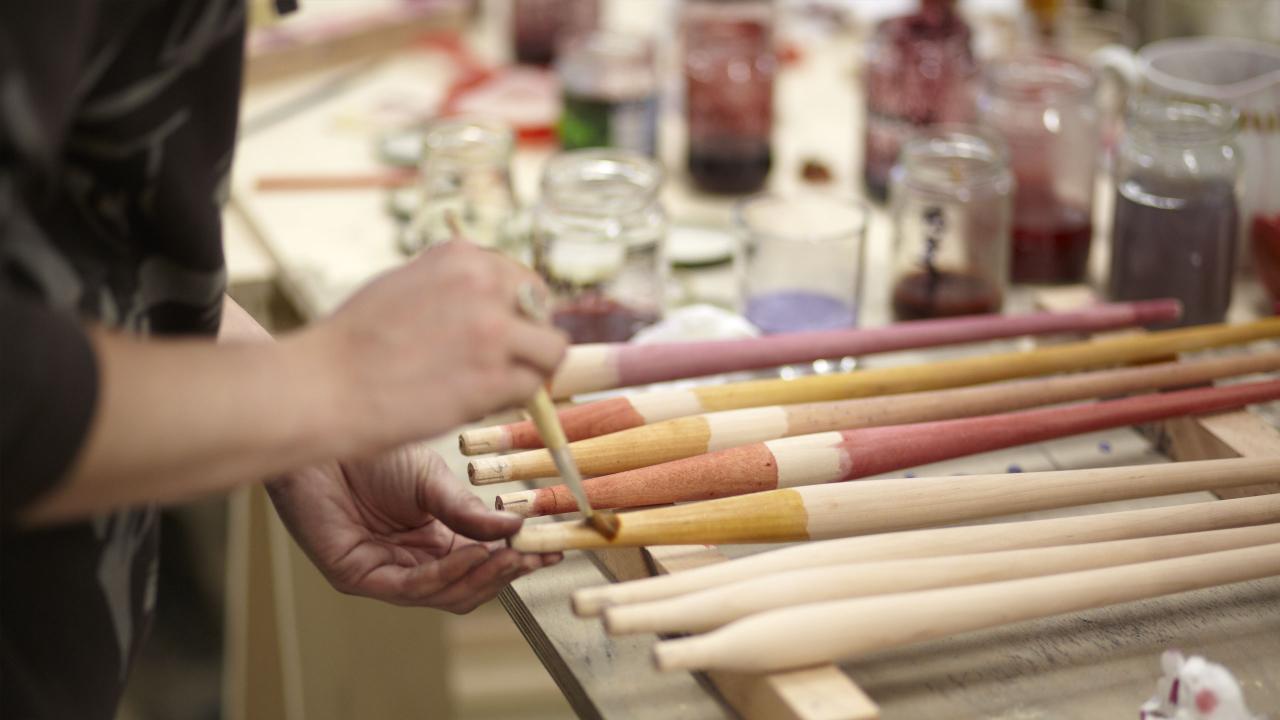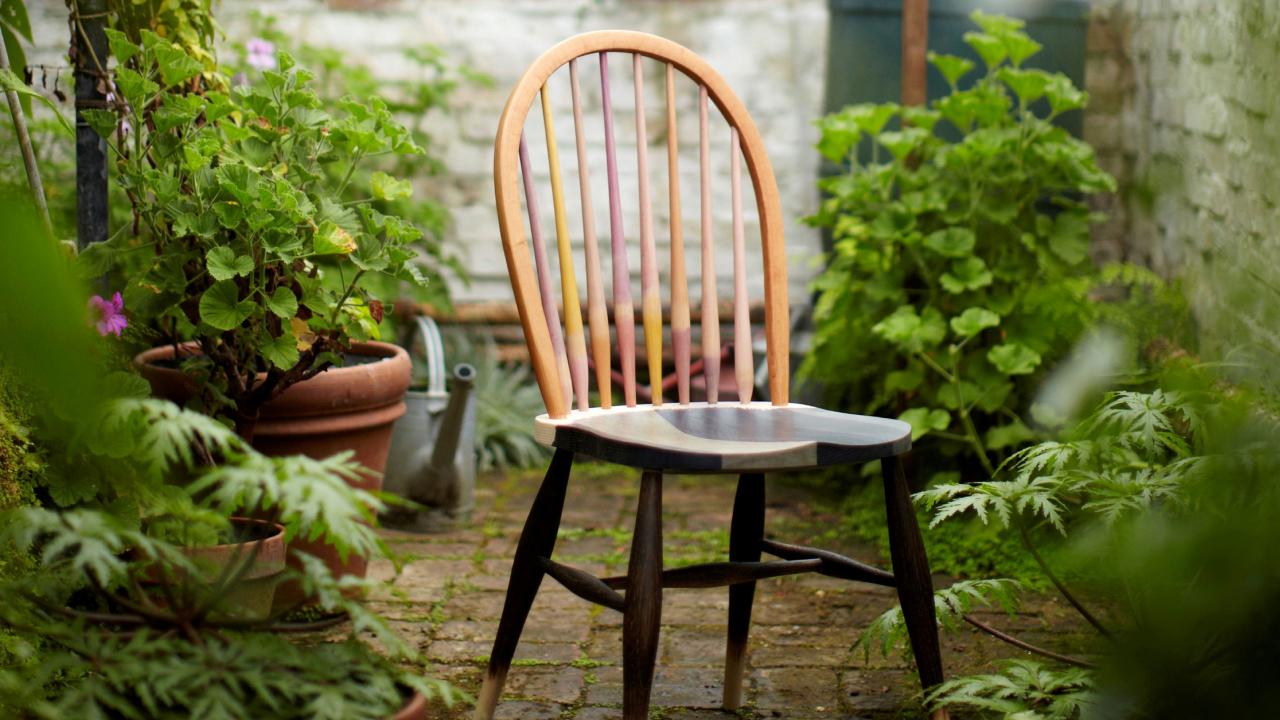MATERIAL
AMERICAN WALNUT
American walnut is one of the most sought-after species in markets across the world and is unique to North America. Forest Inventory Analysis (FIA) data shows U.S. walnut constitutes 1.0% of total U.S. hardwood growing stock and while 0.31 million m3 is harvested each year, more than 1 million m3 of American walnut grows naturally during the same period. The sapwood of walnut is creamy white, whereas the heartwood is light brown to dark chocolate brown, making the difference in colour quite distinct. Walnut is tough, hard and of medium density and is considered one of the supreme species for high end furniture, cabinets, doors and interior joinery.

AMERICAN HARD MAPLE
Hard maple, growing naturally in the hardwood forests of North America, is world-renowned for its delicate colour, hardness, fine grain and finishing quality. American hard maple is a cold climate species although trees can grow throughout the USA. Forest Industry Analysis (FIA) data shows U.S. hard maple makes up 7.0% of total U.S. hardwood growing stock and that while 9.1 million m3 are harvested each year, more than 18 million m3 of American maple grows naturally across the U.S. hardwood forests each year. The sapwood of hard maple is normally creamy white and the heartwood varies from light to dark reddish brown. The wood has a close fine texture and is generally straight grained but can occur as ‘curly’, ‘fiddleback’ and ‘birds eye’ figure.

AMERICAN CHERRY
American cherry is a supreme hardwood species from the U.S. hardwood forests and is unique to North America, with warm colour tones and superb finishing qualities. Forest Inventory Analysis (FIA) data shows U.S. cherry growing stock is 3.0% of total U.S. hardwood growing stock and that while 4.3 million m3 is harvested each year more than 11 million m3 of American cherry is growing naturally across the U.S. forests during the same period. The heartwood of cherry can vary from rich red to reddish brown and darkens on exposure to light with time. The sapwood is creamy white. Being hard and stable when dry, the wood is very easy to stain and finish to an excellent surface. It is highly prized for furniture and interior joinery.

AMERICAN WHITE OAK
American white oak is one of the most popular species from the U.S. hardwood forests in export markets and is unique to North America. Forest Inventory Analysis (FIA) data shows U.S. white oak makes up 15.7% of total U.S. hardwood growing stock and that while 20.9 million m3 of American white oak are harvested each year, nearly 40 million m3 are growing in the hardwood forests in the same period. In general the sapwood of white oak is whitish to light brown and the heartwood is normally light to mid, or even dark, brown. The wood of white oak is mainly straight-grained with medium to coarse texture. Its excellent overall strength properties, relative to weight, make it a preferred hardwood species for structural applications.

American red oak
American red oak is the dominant species in the U.S. hardwood forests with distinctive grain, and wood that is not always red in colour. The name is supposedly due to the leaf colour in the fall. Red oak trees grow only naturally and almost exclusively in North America, although planted elsewhere. Forest Inventory Analysis (FIA) data shows U.S. red oak growing stock is 18.7% of total U.S. hardwood growing stock and that while 33.9 million m3 of American red oak is harvested each year, more than 32 million m3 is naturally growing over the same period. In general the sapwood of red oaks is light brown and the heartwood is often pinkish to reddish brown. American red oaks have very good overall strength properties relative to weight. Its main uses are furniture, flooring, doors and certain construction applications.

AMERICAN HICKORY
American hickory and pecan are different species of a very diverse group, but in the round (log) they are virtually indistinguishable from each other and therefore often processed by saw mills and sold mixed together. The trees grow naturally throughout the Eastern U.S. and Forest Industry Analysis (FIA) data shows that hickory makes up 5.4% of total U.S. hardwood growing stock. While 6.5 million m3 of hickory is harvested each year, more than 14 million m3 grow naturally in the hardwood forests each year. The wood of hickory varies greatly in colour, grain pattern and appearance. It is rather coarse, strong, heavy and very hard. The hardwearing properties make it an excellent choice for flooring, especially in situations of high traffic use.

AMERICAN PECAN
American pecan and hickory are different species of a very diverse group, but in the round (log) they are virtually indistinguishable from each other and therefore often processed by saw mills and sold mixed together. Pecan trees grow naturally in the south eastern USA and principally in the Mississippi valley, making up 0.3% of total U.S. hardwood growing stock. Each year 300,000 m3 of American pecan is harvested yet 800,000 m3 is growing each year across the hardwood forests. The wood of pecan varies greatly in colour, grain pattern and appearance. It is coarsely textured and the grain is usually straight but can be wavy. The wood of pecan is usually considered very strong with excellent stem bending classification, high crushing strength, high stiffness and very high shock resistance making it perfect for tool handles and sporting goods.






